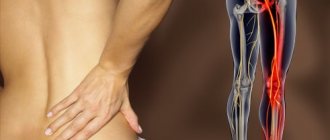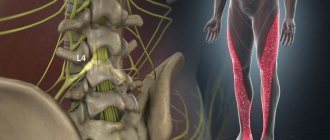Numbness of the fingers is a complete or partial loss of sensation in the entire hand or individual fingers, which can be on one or both hands. The correct name is hypoesthesia. This symptom occurs in many neurological disorders, but also occurs in healthy people.
Each peripheral nerve has a motor and a sensory part. Irritation or damage to sensory fibers of any nature - mechanical, tumor, inflammatory, autoimmune - causes a disorder in the form of numbness, burning, tingling.
At CELT you can get advice from a neurologist.
- Initial consultation – 3,500
- Repeated consultation – 2,300
Make an appointment
In a healthy person, numbness in the fingers of the hand – most often the right one – occurs due to constant overload of the hand muscles. This happens to pianists, hairdressers, programmers, and sometimes to massage therapists and cosmetologists. Sometimes the hands go numb during sleep, when a person lies on his side for a long time with his hand placed under his body. In all these cases, numbness is caused by a temporary disruption of blood flow in the arm due to mechanical compression of blood vessels and nerve trunks. Numbness is often accompanied by a burning sensation or a crawling sensation, but all this quickly passes after the limb returns to its normal physiological position.
Provoking factors
A completely healthy person rarely experiences numbness; they may indicate a hidden pathology in the form of:
- consequences of injuries;
- various diseases of the spinal column;
- joint inflammation;
- degenerative or destructive diseases of the cartilage and ligaments of the hand;
- nervous and mental disorders;
- persistent decrease in blood pressure;
- diseases of the endocrine glands.
There are currently no clear scales that determine the severity of hand numbness. If the unpleasant sensations bother you from time to time and go away after simple movements or rubbing, then you hardly need to worry. However, in case of frequent repetition of numbness, when it happens several times a week or the discomfort increases, you should consult a doctor as soon as possible, as this may be the beginning of the disease.
Treatment of the disease
Having determined the symptoms of hypoesthesia, as well as its localization, it is necessary to urgently begin treatment without delay.
The selection of medications is carried out depending on what exactly caused the disease.
For example, if there is hand hypoesthesia associated with metabolic disorders, the doctor may prescribe a course of vitamin and mineral complexes.
Also, to treat numbness, a course of corticosteroids is sometimes used to relieve the exacerbation of the disease.
If the sensitivity of the legs is impaired, a warm shower and evening walks are usually used.
Additional treatment methods include :
- phonophoresis;
- electrophoresis;
- ultrasonic waves;
- darsonval;
- paraffin and ozokerite wraps;
- radon baths and mud;
- massage;
- yoga classes;
- acupuncture.
There is also the opportunity to use traditional medicine. You just have to keep in mind that self-medication is fraught with consequences, so you should always consult with your doctor.
Here are a few popular recipes for hypoesthesia :
- If your fingers are affected, you can take half a glass of sugar and vegetable fat and mix. Apply in circular motions to affected areas. After this, add 2 tablespoons of salt to a liter of warm water and dip your fingers in it for 45 minutes.
- If your legs are numb, honey wraps will be helpful. Sore legs should be lubricated with honey and wrapped in natural fabric. The course of treatment is 3–4 procedures.
- You can also take half a liter of vodka and 50 g of bush lilac flowers, leave for a couple of weeks, and then apply compresses to numb legs. Repeat for two weeks.
Before the treatment has its effect on the patient, he should exercise maximum caution so as not to accidentally harm himself.
So, if attacks are provoked by external factors, such as ambient temperature, time of day or physical condition, then they should be avoided if possible.
If you often experience numbness in your face, you need to be careful when eating, as you may accidentally bite your tongue or cheek.
If you have hypoesthesia, which manifests itself in the form of insensitivity to temperatures, you need to be extremely careful near heat sources, since during an attack you can involuntarily get burned.
Diseases in which numbness of the hands is a symptom
These are conditions such as:
- rheumatic diseases of the joints of the fingers;
- osteochondrosis of the cervical spine, which also causes coordination problems, headaches, and limited movement of some muscles of the shoulder girdle, which is caused by bone growths or osteophytes;
- vertical and horizontal protrusions (hernias) of the intervertebral disc;
- thrombosis of blood vessels of the hand or finger;
- multiple sclerosis, in which the myelin sheath of the nerve is destroyed and the central nervous system is affected;
- carpal tunnel syndrome or another type of tunnel syndrome, when a nerve is compressed in a bone or muscle-ligamentous tunnel;
- metabolic disorders caused by diabetes mellitus;
- anemia or anemia, when tissues lack oxygen;
- inflammation of the brachial nerve plexus;
- various inflammatory processes of hand tissues, aseptic or purulent;
- amyotrophic lateral sclerosis or ALS, when at the onset of the disease some patients interpret increasing weakness in the arm as “numbness”
- disturbance of blood flow in the brain - in fairness, it must be said that in this case, movements, vision, speech are also most often impaired, but this is also one of the common reasons why the fingers suddenly go numb;
- Raynaud's syndrome, developing as a result of vibration or genetically determined, when numbness is accompanied by pallor, turning into cyanosis, and then into redness of the skin of the hand
- alcohol intoxication, in which the hands become numb like “gloves”, which is caused by damage to the peripheral nerves;
- diphtheria, which, thanks to universal vaccination, occurs easily and in an erased form; one of the manifestations may be polyneuropathy.
Numbness of the fingers may be the reason for a clinical examination, which will eventually reveal the truth. Modern diagnostic equipment makes it possible to give a preliminary conclusion already during the first day of the examination, or at least significantly narrow the range of the diagnostic search.
Numbness of each finger has its own characteristics. Since the branches of three main nerves are responsible for the innervation of the skin of the hand.
Features of manifestations of iatrogenic damage to the trigeminal nerve
- Painful discomfort, changes in sensations, numbness (anesthesia).
- Functional consequences - Patients who experience pain from touch or cold often have difficulty with daily functions: kissing, communicating, speaking, eating and drinking, etc. https://www.ncbi.nlm.nih.gov/pubmed/22677874
- Psychological consequences - patients develop various anxiety, fear, anger, post-traumatic stress disorder. Psychological disorders can be aggravated in cases where informed consent for implantation, endodontic treatment, orthognathic surgery, etc., which specifically indicates possible nerve damage, has not been signed before medical intervention.
Rice. 6. Schematic representation of the relationship of the branches of the inferior alveolar nerve with the formed implant bed. Pain during drilling is an important diagnostic criterion for the proximity of the nerve.
What can you think about when different fingers are numb?
All fingers on the hand are innervated differently, and by the characteristics of unpleasant sensations one can indirectly judge what caused the disease.
The first or thumb on the palmar surface is innervated by the median nerve, most often irritation is caused by compression or compression. People who constantly load this finger suffer - watchmakers, pianists, jewelers.
In some cases, the cause is a benign tumor that mechanically compresses the nerve. This may be a neurofibroma arising from supporting or glial nerve cells, or a hemangioma, the source of which was capillaries.
People who constantly carry heavy bags or grip handlebars excessively may develop stenotic transverse ligamentosis. This is a condition in which the ligaments lose their natural elasticity, become stiff and stop stretching. The result is the so-called carpal tunnel syndrome with damage to the median nerve.
The index finger and thumb on the dorsal surface are innervated by the radial nerve. Impaired sensitivity in them may be a manifestation of inflammation of the epicondyles of the humerus or epicondylitis, or compression of the radial nerve in the area of the humerus.
You should consult a doctor if numbness lasts longer than 5 - 10 minutes, does not go away after kneading and straightening the hand, and repeats several times during the week.
The middle finger of the hand is partly innervated by the median and partly by the ulnar and radial nerves - its numbness is accompanied by a feeling of “twisting” of the entire palm, similar to calf cramps. Sensory disturbances also appear in this finger when carpal tunnel syndrome occurs, when the transverse ligament presses the nerve too much against the bones of the wrist. Loss of sensitivity is noticeable more often at night, it becomes difficult to hold objects, and shaking the hand stops the discomfort. It seems to a person that the brush has become heavier and thicker. Sometimes swelling does occur.
Often, numbness of the finger occurs in people who are constantly exposed to hypothermia, when they develop inflammation of the inner wall of blood vessels or endarteritis.
The fourth and fifth or ring and little fingers are innervated by the ulnar nerve. The habit of constantly leaning on the elbow, as well as working with trays and daily overload of the wrist contribute to the damage. In men, numbness of these fingers may be the first sign of contracture due to degeneration of the aponeurosis or tendon plate of the palm. Unpleasant sensations in these fingers cannot be ignored, since if the ulnar nerve is damaged, contracture or immobility can form in the joints of the fingers.
Fingertips - it is most difficult to determine why the tips become numb, since the number of reasons is large. This is a violation of the blood supply in the cervical spine, caused by the formation of an atherosclerotic plaque, iron deficiency, the onset of diabetes mellitus, and inflammation of the pancreas. This is inflammation and degeneration of the finger joints, Raynaud's syndrome, venous insufficiency and thrombophlebitis that complicates it. These are chronic stresses and acute traumatic experiences that happen in the life of every person. These are arterial hypertension or vascular hypotension, chronic poisoning, harmful working conditions.
Classification
Depending on which group of analyzers is affected, the following types of hypoesthesia are distinguished:
- Facial hypoesthesia – occurs due to vascular or neurological pathologies. If sensation is lost in one half of the face, we can talk about trigeminal neuralgia, and in the case of redness or rash in the affected area, the development of herpes zoster may be involved.
- Hypoesthesia of the hands - with loss of sensitivity for two or more minutes, we can talk about the presence of diseases of the nervous or vascular system. This condition can also be caused by multiple sclerosis, a tumor, or a cerebrovascular accident.
- Hypoesthesia of the lower extremities - occurs when blood circulation in the lower extremities is impaired and nerves are damaged. In the presence of severe pain, vascular disease can also be diagnosed - obliterating endarteritis, venous insufficiency, atherosclerosis. If you experience shooting pain in the leg or lower back, this may indicate sciatica.
Diagnostics
Conducted individually, the search begins with excluding the most dangerous conditions. According to indications, the following studies may be prescribed:
- Electroneuromyography (ENMG of the upper extremities)
- duplex scanning of arteries and veins of the upper extremities
- X-ray of the cervical spine
- Magnetic resonance imaging of the cervical spine, brain, joints
- blood chemistry;
A specific list of diagnostic procedures is determined by the attending physician based on clinical examination data. Sometimes a diagnostic search leads to the discovery of diseases that a person did not even suspect about.
Disease prevention
In order to prevent further development of the disease, it is necessary to start leading a healthy lifestyle:
- rejection of bad habits;
- healthy, full sleep;
- a balanced diet including vegetables and fruits;
- light exercises to ensure limb mobility;
- walks in the open air;
- alternation of work and rest;
- timely treatment of chronic diseases that can cause hypoesthesia.
So, we found out that hypoesthesia is a rather serious disorder of the body , which cannot be left to chance, expecting that it will go away on its own.
Because sometimes this disease can lead to the most tragic consequences.
Therefore, if you often feel signs of numbness in any part of the body, you should consult with an experienced doctor, and, if possible, get rid of bad habits that contribute to the development of hypoesthesia.








